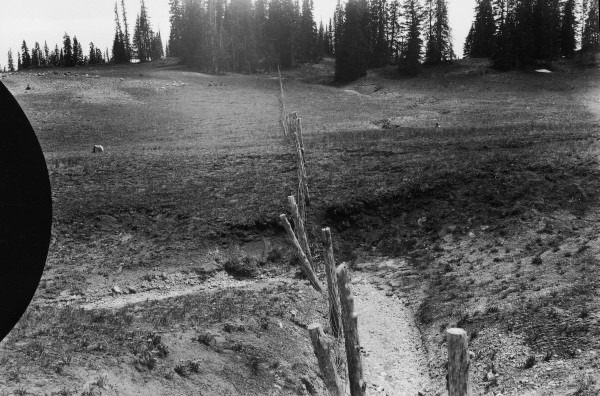Long Valley
1942

2006

Description:
Plate 1367X. Long Valley 1942 – 2006 Viewed south in upper Long Valley. The fence was built in 1936 and is the boundary between Cedar Breaks National Monument on the right, and the Dixie National Forest on the left. Thus, when the 1942 image was made the area to the right of the fence had not been grazed by domestic sheep for six years, while the Forest continued to be grazed by sheep. In 1960, the Forest Service built a 6.9 acre exclosure at the head of Long Valley that included the area to the left of the boundary fence - - see Plates 1096x to 1105x. The exclosure was fenced to exclude only domestic sheep, not deer or elk. The area inside the exclosure was then disced, pitted, and reseeded with smooth brome, Kentucky bluegrass, intermediate wheatgrass, and slender wheatgrass. The Forest Service, however, failed to maintain the exclosure and sheep have grazed the former exclosure since the 1970’s. Conifers have increased, but many of the older spruce were recently killed by insects and disease. Both sides of the fence are more vegetated today than in 1942 and correspondingly soil erosion has declined. The gullies too are more vegetated today than in the past. Native forbs are more abundant on the National Monument where sheep have now been excluded for 70 years. Indian paintbrush, for instance, was observed only on the National Monument side of the fence. The original negative has been damaged along the left edge.
Photo Information:
U.S. Forest Service photograph (453914) taken on July 3, 1942; retake by Charles E. Kay on August 3, 2006 - - Photo No. 5705-18. Original photograph held by the Utah Historical Society, Reed W. Bailey Collection (Box 11), Salt Lake
Vegetative Community:
Conifer, Dry Meadow
Location:
South West: Section 12, Range 9 West, Township 37 South; UTM 338220 E, 4163800 N; elevation 10,200 ft. City, UT.


 Utah 4-H & Youth
Utah 4-H & Youth